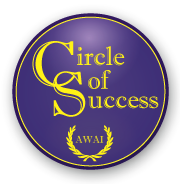
Email marketing stands out as one of the most effective and affordable tools for garden centers looking to grow their customer base, foster loyalty, and drive sales year-round. From delivering timely planting tips to highlighting seasonal promotions, email unlocks the ability to reach your audience exactly when it matters most. This step-by-step guide covers everything you need to know about getting started with email marketing for your garden center, laden with practical tips tailored to horticultural retailers.
Why Email Marketing Works for Garden Centers
Garden centers flourish in local communities, yet often struggle to maintain ongoing engagement outside the peak gardening season. Here’s why email is the ideal solution:
- Direct Relationship: Email lands in customers’ inboxes, offering a direct, personal line of communication far more impactful than social media algorithms allow.
- Education and Inspiration: Share relevant growing advice, pest alerts, and design ideas to nurture expertise and excitement among your customers.
- Timely Promotions: Last frost date approaching? Send a reminder! Got surplus tomato seedlings? Promote a timely special.
- Measurable ROI: Email platforms make it easy to track open rates, clicks, and sales generated, so you can optimize your strategy.
Step 1: Build and Segment Your Email List
Your first priority is building a robust permission-based list:
- Website Signups: Include prominent signup forms on your homepage, at checkout, and on gardening blog articles. Consider offering a downloadable planting guide as a signup incentive.
- In-Store Opportunities: Capture emails at the register via digital forms or paper slips. QR codes on signage can link shoppers directly to your signup page.
- Events and Classes: Collect emails during workshops and garden tours—participants are often your most engaged customers.
Segmentation is crucial as your list grows. Group subscribers by interests, such as:
- Vegetable gardening vs. ornamentals
- New gardeners vs. advanced enthusiasts
- Indoor vs. outdoor gardeners
Segmented emails allow you to send tailored advice (e.g., a “tomato troubleshooting” email to veggie lovers, or a native plant sale announcement to eco-conscious customers), resulting in higher engagement and fewer unsubscribes.
Step 2: Choose the Right Email Marketing Platform
Today’s email marketing services automate much of the process and ensure compliance with regulations. Top picks for small businesses and garden centers include:
- Mailchimp: User-friendly with a free tier for smaller lists, plus drag-and-drop templates.
- Constant Contact: Exceptional customer support and event integration.
- Klaviyo: Advanced e-commerce features, ideal if you sell online.
- MailerLite: Affordable and simple, great for growing lists.
When evaluating platforms, look for:
- GDPR and CAN-SPAM compliance (to protect both you and your readers)
- Mobile-friendly templates (over 60% of emails are opened on smartphones)
- Simple automations (welcome emails, birthday offers, order confirmations)
- Integration with your point of sale or e-commerce system if applicable
Step 3: Craft Your Campaigns—What to Send
Content is king. The best emails win trust by providing value, not just pitching sales. Some effective ideas specific to garden centers include:
Educational Content
- Seasonal planting guides: What to plant now, with local frost/freeze dates
- How-to articles: Composting, pruning, pest ID, watering tips, organic gardening
- Featured plant of the week: Details and care tips for a spotlighted specimen
Store Promotions
- Grand opening or anniversary sales
- Exclusive coupons for loyal subscribers
- Flash sales on overstocked items (e.g., “All annuals 25% off this weekend!”)
Events, Classes, and Community
- Workshop invitations: Seed starting, native gardening, container planting
- Garden tours or open houses
- Calls for local gardening photos (“Show us your best tomato!” for a chance to win a gift card)
Customer Success Stories
Feature photos and quotes from local gardeners, highlighting before-and-after projects with your center’s products.
Product Spotlights
Inform subscribers about new arrivals, trending tools, or organic fertilizers, and briefly educate them on benefits or use cases.
Step 4: Design Best Practices
Not a graphic designer? No problem—email marketing software provides templates, but keep these guidelines in mind:
- Keep it clean: Limit font types, use larger text for accessibility, and balance images with enough white space.
- Appealing subject lines: Make subject lines short, clear, and action-oriented (“Last chance for spring seedling sale!”).
- Strong call-to-action: Tell readers what you want them to do (“Sign up for Saturday’s workshop,” “Shop summer blooms”).
- Include branding: Consistent colors and your logo boost recognition.
- Mobile-first: Preview every email on a phone to ensure usability.
- Use captivating photos: Showcase actual garden center displays, customer gardens, and new plants instead of generic stock images.
Step 5: Frequency, Timing & Compliance
- Consistency matters—aim for one to four emails a month. Too few, and you’ll lose engagement; too many, and unsubscribes may spike.
- Schedule during key times: Early spring (planning), first warmth (planting), mid-season (maintenance), and fall (bulbs, perennials) are strategic moments.
- Always have an unsubscribe option, a physical address, and follow legal guidelines (CAN-SPAM for US, GDPR for EU).
Step 6: Measure and Refine
Your email platform provides actionable analytics:
- Open rates: How many people open your emails? 20%-30% is a healthy benchmark.
- Click rates: The percentage who click a link—around 3% or better is strong for retail.
- Unsubscribes: Track carefully—if many opt out, review your frequency or relevance.
Test various subject lines and content formats, compare performance, and refine your approach. Don’t be afraid to resend an updated version of an important email to subscribers who didn’t open the first one.
Advanced Tips for Garden Centers
- Drip campaigns: Automate a welcome series for new subscribers with care basics, FAQs, and a first-purchase coupon.
- Loyalty rewards: Send exclusive offers to repeat customers, like free soil amendments with any purchase.
- Personalization: Use customer names in subject lines and segment based on purchase history (“Just got tomatoes? Here’s how to stake and prune for best results!”).
- Photos from your store: Feature new displays or garden center pics to humanize your brand.
Common Pitfalls and How to Avoid Them
- Buying email lists: Never do this—only email people who have opted in to hear from you.
- Image-only emails: Text is essential for deliverability. Always include clear, written content.
- Irregular sending: Set a manageable schedule so customers remember who you are (and don’t mark emails as spam).
Final Thoughts
Email marketing is more than a promotional tool—it’s the secret to building genuine, lasting relationships within your garden center community. When you consistently share valuable insights, seasonal advice, and the right offers, your customers won’t just visit your center; they’ll look forward to hearing from you and returning—season after season.
If you’re ready to transform your customer engagement, but aren’t sure where to begin or want expert guidance on launching or refining your email marketing, I’m here to help.
Book your free discovery call today—and let’s create an email marketing strategy that cultivates growth for your garden center!



